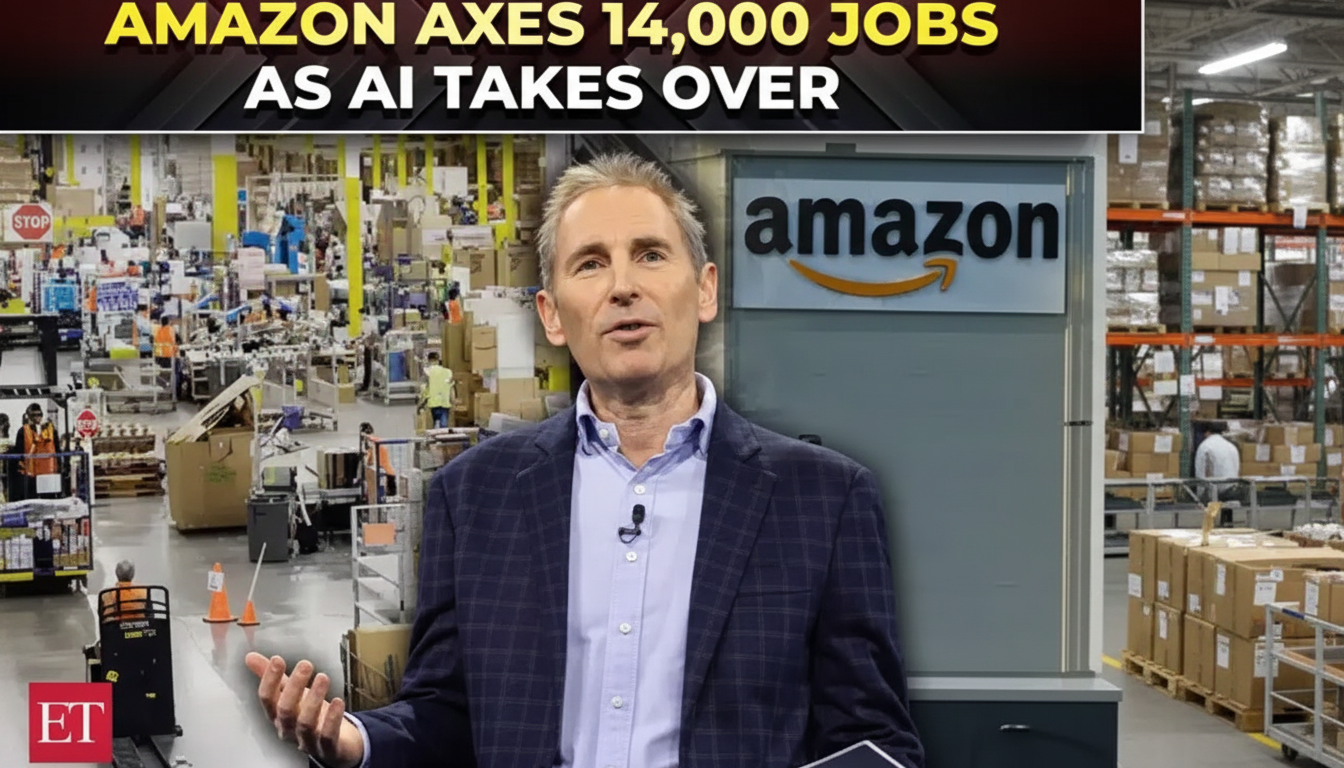Amazon is cutting 14,000 corporate jobs in a systemwide overhaul to eliminate bureaucracy and empower front-line employees on technology projects. The cuts hit the company’s administrative and white-collar ranks and represent about 4 percent of its corporate workforce, a recalibration that is indicative of how aggressively the tech giant is transforming itself around A.I.
The move is Amazon’s biggest corporate downsizing to date, though the company made some smaller cuts several years ago. Though the company overall has more than a million workers across operations and logistics, this week’s action is focused on corporate functions versus front-line fulfillment.

Why Amazon Is Shaking Up Its Corporate Structure Now
Internal memos from senior leadership describe an urgency to cut through the organizational bloat, streamline decision-making and reimagine how dollars are spent on “big bets” — chief among them generative AI and automation. The company’s lead executive for people experience and technology, Beth Galetti, told employees the company wanted to work “leaner” with sharper ownership so teams can move fast on behalf of customers and the business.
That focus is in line with recent comments from CEO Andy Jassy — that the use of such AI agents could significantly alter how work gets done inside Amazon. Management is hoping some of these types will do less of what they are doing today, but find their skills and time put to productive use working on data and infrastructure-related activities in a new product or around an AI-driven service.
AI Investment and the Cost Equation Driving Strategy
Amazon is investing heavily to construct the compute backbone for AI. That’s tens of billions into data centers, custom silicon like Trainium and Inferentia, and the cloud tooling required to run large-scale models, according to company filings. During the most recent period, Amazon reported net sales increased 13% to $167.7 billion and added that Amazon Web Services accounted for 18% of net sales — an indication of just why leadership wants to rein in overhead even more while doubling down on high-margin infrastructure and software.
The economic argument is relatively simple: AI workloads are capex-heavy up front but generate op leverage when deployed at scale. One growth avenue is to create AI services that other companies use to build their software (like language processing or image recognition models) and then are sold as a service by AWS — automating internal workflows such as support, HR case management operations, finance reconciliations, and code generation can cut back on recurring costs. Gartner and IDC analysts have both pointed out the growing demand for enterprise AI infrastructure, something that Amazon is well positioned to meet.

Scope of Cuts and Corporate Teams Affected
Amazon’s corporate employment was more than 360,000 people in recent months, making the 14,000 reduction a significant refashioning without being an across-the-board retreat. The company has already made smaller cuts in communications and sustainability earlier this year, and Reuters had reported that as many as 30,000 roles in its corporate ranks were under review across human resources, devices and services, as well as the operational groups within these functions.
Most affected employees will have 90 days to try to secure a new job within the company — with recruiters expected to prioritize them. Employees who are unable to be placed elsewhere will receive a severance package and continue receiving health benefits for a time, as well as outplacement support. Leadership also indicated that the company will continue to cut management layers and selectively add in priority areas connected to AI and cloud expansion.
What It Means for Investors and Corporate Staff
For investors, the message is clear and consistent: squeeze overhead to pour investment into areas where return is strongest. AWS is still the money machine, and AI-centric services — from model hosting and tuning to agent frameworks — count as a way to hike its lead. Meta’s widely telegraphed “year of efficiency” provided a recent case study of how markets reward disciplined cost control combined with growth bets, and Amazon appears to be using a page from a similar playbook.
For workers, the immediate calculus is more complex. They will manage roles that are removed, reshaped and reimagined as AI tools go mainstream. Many corporate functions will be downsized or retooled, while demand for data engineering, applied ML, developer tooling, and cloud-native architecture increases. The 90-day internal mobility period is meant to capture some of that movement, but not all skills are transferable.
The Bigger Picture for Amazon and the Tech Labor Market
Amazon’s move reflects a larger reset happening at giant tech companies that once hired aggressively and are now re-optimizing for AI-era productivity. As investors pour money into compute capacity and developer platforms, the question is no longer strategic (whether companies should adopt AI) but tactical (how fast they can reorganize around it). Amazon is betting that faster decision-making, less hierarchy and more investment in a few big bets will keep it ahead — both in cloud computing and its core online retail business — while also remaking what corporate work looks like inside one of the world’s largest employers.

